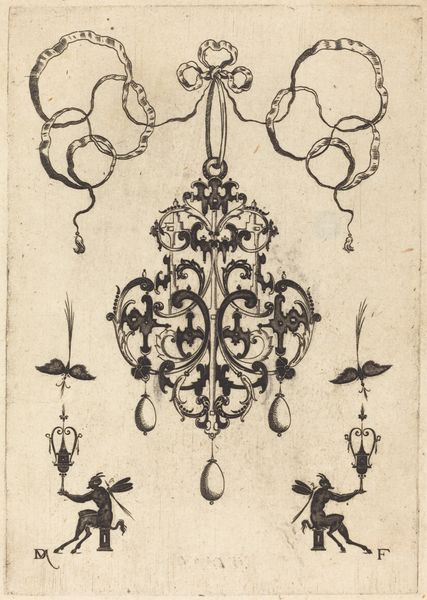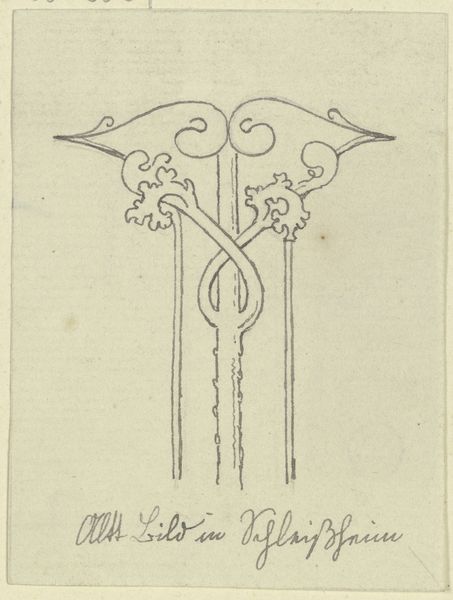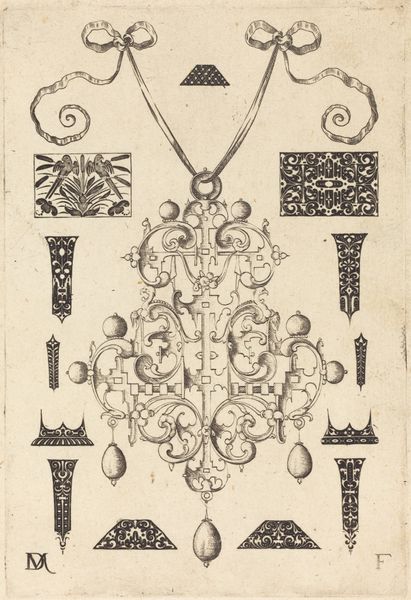
Udkast til rosetter og planteornament, beregnet for træ eller metal 1743 - 1809
0:00
0:00
drawing, mixed-media, ornament, coloured-pencil
#
drawing
#
mixed-media
#
ornament
#
coloured-pencil
#
coloured pencil
Dimensions: 228 mm (height) x 137 mm (width) (bladmaal)
Curator: Take a look at "Udkast til rosetter og planteornament, beregnet for træ eller metal" – a study in mixed media including drawing and coloured pencil dating roughly from 1743-1809. The artwork is currently held at the SMK, the National Gallery of Denmark. Editor: My immediate response is to the sense of controlled grace – like peering at the blueprints for a forgotten elegance. It is the making of adornment. Curator: Yes, precisely! I’d like us to think about ornamentation as a crucial component of material culture and craftsmanship. This piece brings into sharp focus the means of its construction and dissemination; it represents the handiwork, skill, and ingenuity invested in shaping the designed world and highlights class. It serves both utilitarian and aesthetic needs. Editor: And there's something potent in recognizing these drawings weren’t just artistic exercises; they were functional documents for a larger social system involving labour, trade, and power dynamics. It is design waiting to be made material. Who might be the craftsman that would make it real? Curator: Let's consider its place in relation to historical production and design. During the 18th and 19th centuries, a cultural emphasis on refinement elevated crafts to an essential skill. However, it also reflected socio-economic class boundaries where access to ornate pieces indicated status and economic privilege, a form of luxury and a visual assertion of class. Editor: In some ways it feels timeless. The lines could be Art Nouveau. But more significantly, I consider the use of coloured pencils and the intent of production, pointing to material constraints and decisions around affordability in this craft, underscoring labor. I also appreciate this opportunity to contemplate a connection to its context, bridging past artistry to current practices. Curator: And by highlighting class distinctions within design through the artist’s approach, it opens questions regarding access, representation, and even appropriation when analyzing ornament throughout various periods and cultures. It reminds us to think more critically about who enjoys, who produces, and what is represented and valorized within the designed sphere. Editor: It provides, on reflection, an illuminating view into the mechanics of artistic innovation.
Comments
No comments
Be the first to comment and join the conversation on the ultimate creative platform.













